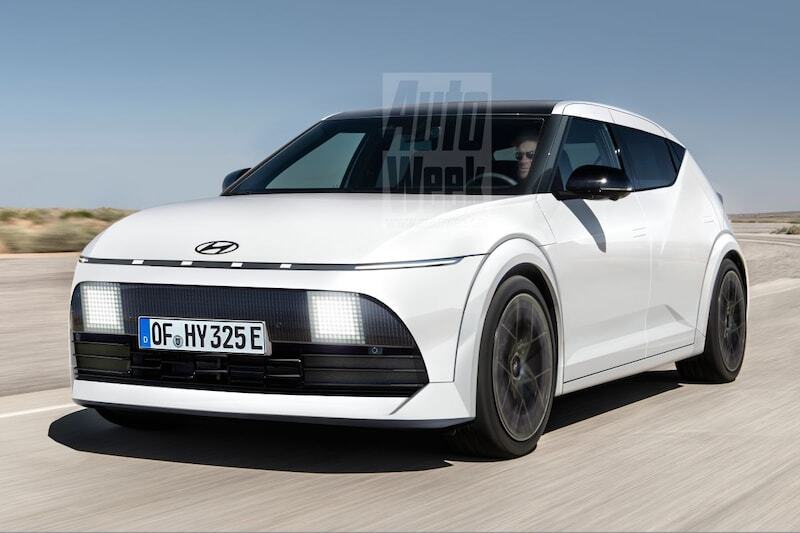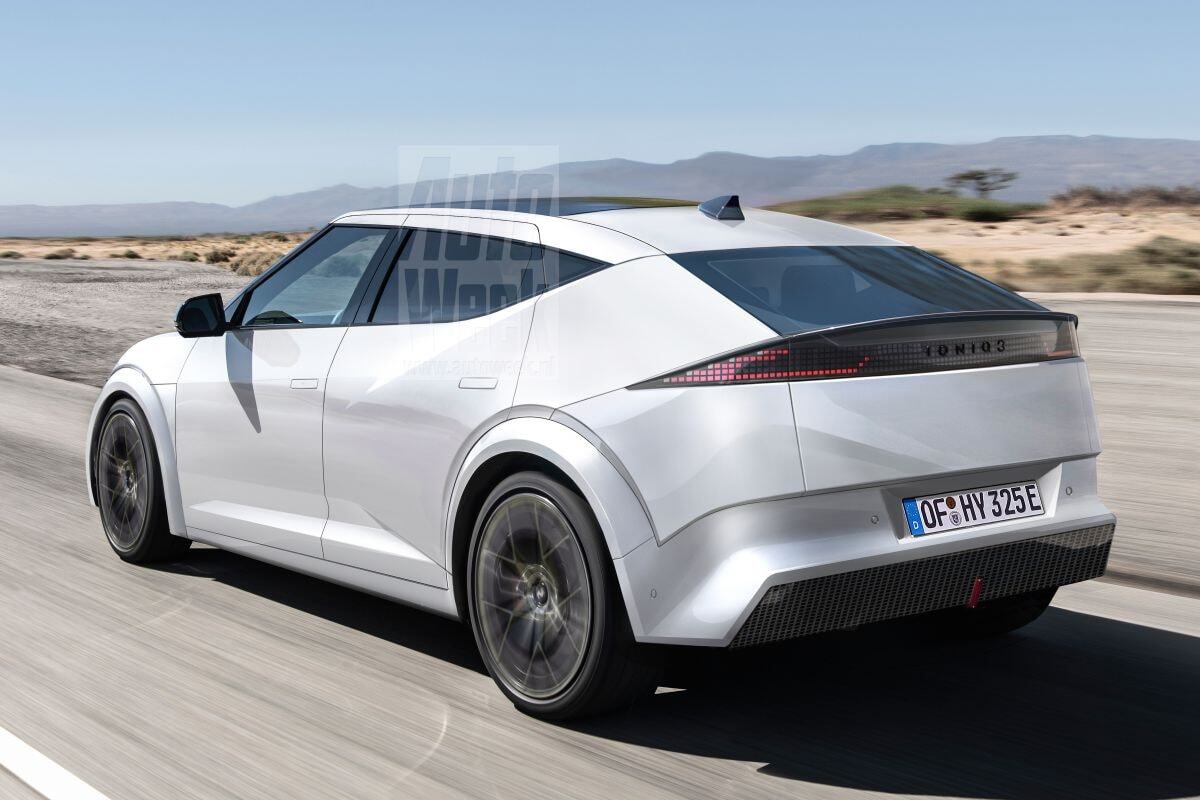
In shipbuilding, a ‘swept stern’ is a rear that gradually leaves the water. This would allow a ship to cut through the water more efficiently, a trick that the new Hyundai Ioniq 3 seems to apply to the air with a similar rear end.
Highlights Hyundai Ioniq 3
Leave it to Hyundai and sister brand Kia to come up with striking designs. The two Korean brands belong to the same group but, given that fact, are given remarkably much freedom to each pursue their own course. Models stand completely on their own in terms of design and are often not entirely identical technically either, with for example a slightly different wheelbase or a different battery capacity for EVs. Other major car groups usually find such apparently unimportant differences far too expensive, but in South Korea they apparently believe this distinction is important to guarantee the right to exist for both brands. There is no lack of variation within the two brands either. Kia and Hyundai each have a recognizable design language with recurring elements, but especially at Hyundai, this certainly does not mean that all models look alike. It is certainly visible that the Ioniq 6 is family of the Ioniq 5, but still the two are also completely different.
All mentioned points will soon be underlined by yet another new electric model from the Korean stable, the Hyundai Ioniq 3. That is, in short, Hyundai’s counterpart to the hugely popular Kia EV3, but apart from technically, certainly visually everything will be different. With the Concept Three, Hyundai already showed what the brand is thinking about, while spy images make it clear that this concept car already gives a good picture of what is to come. The Ioniq 3 gets a shape reminiscent of certain generations of the Toyota Prius, but then in a higher and especially hipper form.

The car gets a remarkably high rear end with a split rear window, a sharply cut-off roofline and a strongly rising shoulder line. The striking basic shape is complemented by the ‘pixel lighting’ that defines the family face, rear lights integrated high in the rear and a layered front. The result is a shape that will be recognizable among thousands, although there may be some similarities with the GV60 from Hyundai’s luxury brand Genesis. That one is however considerably larger, because the Ioniq 3 is expected to have a vehicle length of about 4.30 meters. This places it squarely in the class of the EV3 and that makes it by definition interesting for the Netherlands, because this is where the numbers are currently being made.
This may pose a problem for Hyundai, because the electric Kona is also still there and it is about the same size. Kia has shown, however, that this does not have to have adverse consequences. That brand had the same ‘challenge’ with the Niro and the EV3, but the dominant EV3 cannot for now prevent the Niro from still ending up in third place. According to Kia, the two cars simply appeal to a different target group, which Hyundai undoubtedly also hopes to achieve. Purely based on electric performance, the front-wheel drive Ioniq 3 will by the way wipe the floor with the Kona, because unlike that car, the Ioniq is a purely electric model on the E-GMP platform. Expect battery packs of roughly 60 or about 80 kWh, 204 hp strong electric motors, an electric range of between (approximately) 440 to well over 500 kilometers. Indeed: fully comparable to what the Kia EV3 already has. The fast charging capacity with 100 to 130 kW will also be comparable, while the Ioniq 3 will also get vehicle-to-load technology. The Hyundai Ioniq 3 will be the fourth model in the Ioniq series after the Ioniq 5, Ioniq 6 and Ioniq 9 and is coming as early as next year. That is nicely quick, but still not a moment too soon: both at Kia and with external competition, one EV after another is being launched.